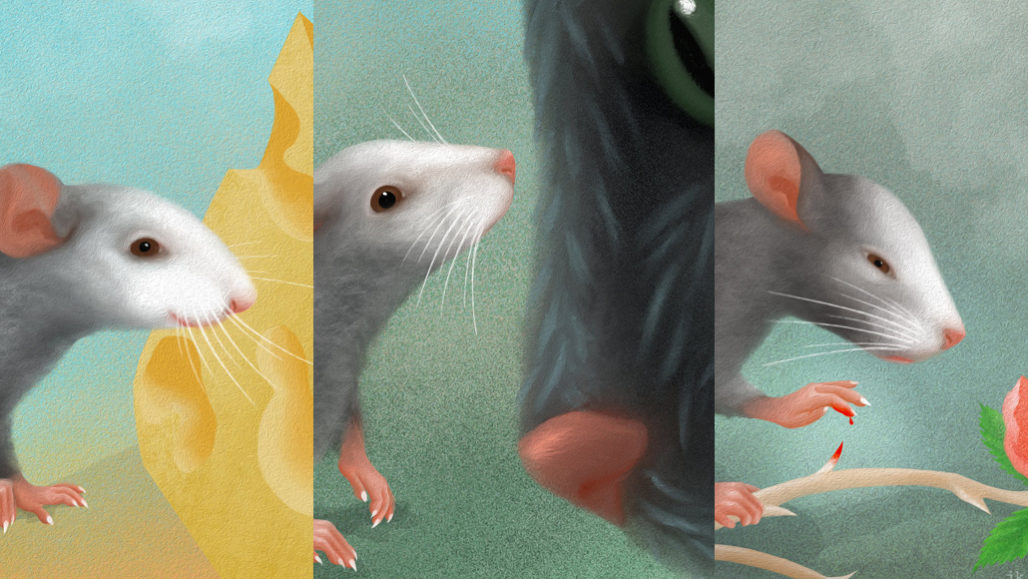Mice show their feelings on their faces
Subtle ear, nose and whisker movements show pleasure, fear, pain and more

Subtle movements by ears, whiskers and noses can signal that a mouse feels pleasure, fear and pain, researchers find.
J. Kuhl/Max Planck Institute of Neurobiology
Although it’s tricky for people to see, mouse feelings are written all over their furry little faces.
A research team in Germany trained a computer program to study the faces of mice for signs of emotion. It was able to reliably spot expressions of joy, fear, pain and other basic emotions. Those signs offer a sort of “field guide” for scientists who study emotion. And understanding the emotion in animals better could help guide human studies too, the researchers say. They described their new findings in the April 3 Science.
Nadine Gogolla studies the brain at the Max Planck Institute of Neurobiology. It’s in Martinsried, Germany. She and her colleagues treated mice in ways to trigger distinct emotions. To evoke pleasure, they gave the mice sugar water. A shock to their tails triggered pain. Bitter quinine (KWY-nyne) water led to disgust. An injection of the chemical lithium chloride made them uneasy and queasy. And being put somewhere they had been shocked in the past sparked fear. For each setup, high-speed video cameras focused on the animal’s faces. These captured subtle movements in the animals’ ears, noses, whiskers and more.
An observer would likely see that a mouse’s face changes, Gogolla says. But translating those subtle changes into emotions? That’s really hard, she says. That true “especially for an untrained human being.”
But a computer had no trouble, the researchers found. They used an approach called “machine learning.” It directs a computer program to scout for patterns in images. The program analyzed thousands of video frames of mouse faces. It spotted subtle movements that accompanied good or bad events.
For instance, take the face of a (presumably happy) mouse drinking sweet water. The ears move forward and fold toward the body. At the same time, the nose moves down toward the mouth. The face looks differently when the mouse tastes bitter quinine. Its ears move straight back. It nose curls slightly backward, too.
Using machine learning to reveal mouse expressions is “an extraordinarily exciting direction,” says Kay Tye. She is a neuroscientist at the Salk Institute for Biological Studies in La Jolla, Calif. She was not part of the new study. The findings “lay the foundation for what I expect will be a game-changer for neuroscience research on emotional states,” Tye says.
The activity of nerve cells in a mouse’s brain also changed with distinct emotions, other analyses showed. These cells reside in a region known as the insular cortex. This deeply buried spot plays a role in human emotions, too.
By prodding cells there to fire signals, the researchers could prompt the mice to display certain facial expressions. These connections may lead to insights on the neural basis of emotions. They also could help scientists explore what goes wrong in disorders such as anxiety, the researchers suggest.







